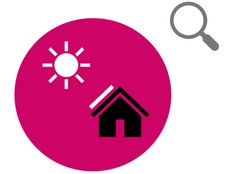Stap 1: Voorbereiden
Wat is het?
Gebruik de BBC micro:bit om te weten te komen hoe afstand het volume van een geluid beïnvloedt.
Dit project is ontwikkeld in een partnerschap met White Rose Science voor wetenschapsleraren en stelt studenten in staat om te leren over hoe geluid reist. Leerlingen kunnen ook leren over het gebruik van sequenties, lussen, variabelen en selectie in computerprogramma's.
Deze video legt uit hoe je het experiment moet doen.
Zo werkt het
- Je speelt een continu geluid op een vast volume op een vaste locatie.
- Je meet de geluidsniveaus in decibel met tussenafstanden van twee meter van de geluidsbron, met behulp van je micro:bit en een batterijpakket.
- Je zou in staat moeten zijn om uit de metingen af te leiden dat geluid zachter wordt naarmate je verder van de geluidsbron komt.
Benodigdheden
- een continue geluidsbron op een vast volume; je wilt misschien ons tone.mp3-bestand afspelen op je computer (gebruik geen geluidsbron die in volume kan variëren, zoals een drum)
- een micro:bit
- een batterij pakket
- een meetlint of een rolmaat
- een grote stille ruimte om het experiment uit te voeren, zoals een schoolzaal
Stap 2: Onderzoek
- Download het hex-bestand en zet de code op de micro:bit. Je hoeft de code voor dit project zelf niet te schrijven om het experiment te doen. Als je geïnteresseerd bent in coderen, bezoek dan Stap 3: Codeer het gedeelte hieronder.
- Speel je continue geluid.
- Zet de micro:bit naast je geluidsbron. Druk op knop A voor een meting en op knop B zodat de meting wordt getoond op het micro:bit LED-scherm.
- Wanneer het micro:bit LED-scherm geen meting toont, toont het een grafiek met huidige geluidsniveaus. Je kunt deze grafiek gebruiken om jou te helpen te bepalen wanneer je wilt meten. Zorg ervoor dat er geen andere geluiden zijn die jouw metingen minder accuraat maken.
- Met behulp van je meetlint of rolmaat meet je een afstand van twee meter van de geluidsbron en doet een volgende meting.
- Ga door met metingen met tussenafstanden van twee meter tot totaal acht meter. (De opnames van de micro:bit kunnen minder nauwkeurig zijn na deze afstand).
Tips
- Voer het experiment uit in een grote ruimte zonder obstakels, zodat je gemakkelijk afstanden van de geluidsbron in een rechte lijn kunt meten.
- Voer het experiment uit in een stille ruimte.
- Doe voor meer nauwkeurige resultaten een paar metingen op elke tussenafstand en reken het gemiddelde uit.
Stap 3: Codeer het
Bekijk deze video om te zien hoe je het project kunt coderen:
Als je geïnteresseerd bent in het wijzigen van de code voor dit project, klik dan op een van de knoppen hieronder:
This content is published under a Creative Commons Attribution-ShareAlike 4.0 International (CC BY-SA 4.0) licence.



